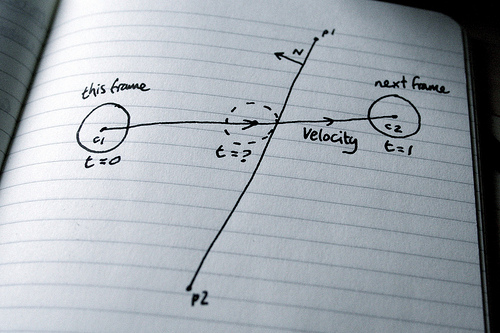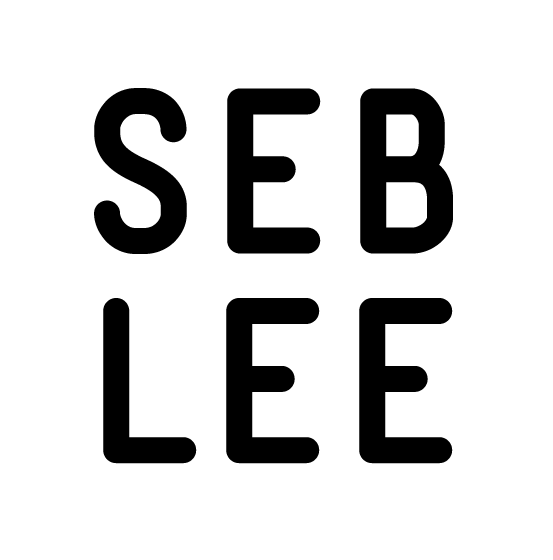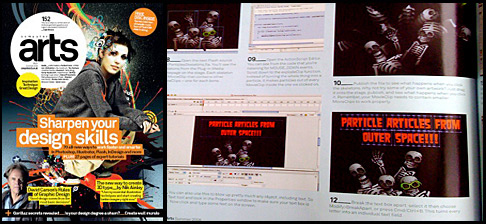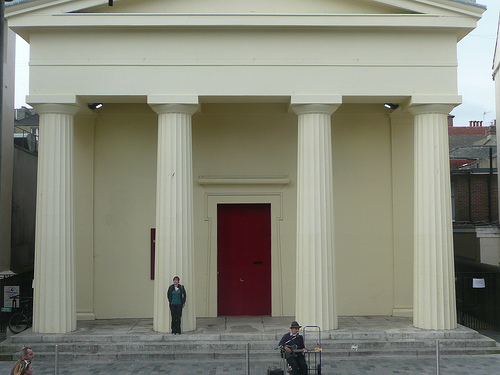In my previous collision detection post, I talked about predicting whether two objects would collide in between frames. This is to avoid the situation where the objects are moving so fast that they pass through each other before you’ve had a chance to see if they’re overlapping. This is often known as a sweep test […]
Predicting circle line collisions




